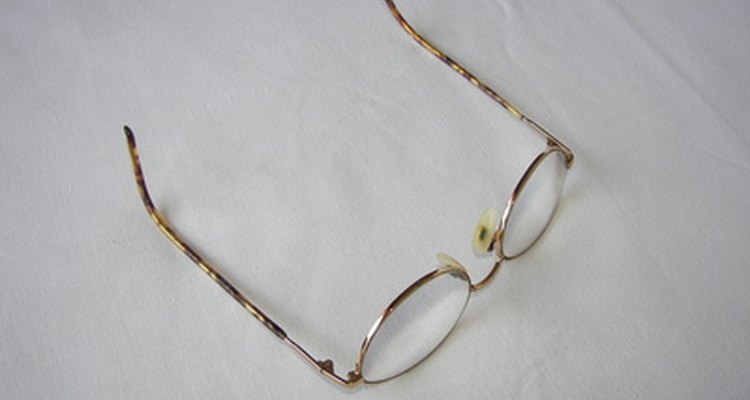
Flexon frames are a type of hypoallergenic eyeglass that are made from lightweight, strong, flexible metal. The titanium-based aluminum frames are estimated to be 25 percent lighter than standard metals. These frames are also corrosion-resistant. Flexon frames rank among the most flexible, and Flexon is sometimes referred to as the "memory metal"; these frames have the ability to return to their original shape after being bent, twisted or crushed. Consequently, they are easy to adjust.
Put your glasses on and look in the mirror. You will want to know exactly what adjustments need to be made before you get started. If your glasses have a nose pad, adjust that first. This will be the easiest part of the adjustment because that portion is usually held together by screws and not by the resilient aluminum-silicon combination that Flexon is made out of. Be careful not to over-bend the nose pad. You may need to use a tiny screwdriver to remove the pad and make the necessary adjustments.
Adjust your Flexon eyeglasses in specific parts. Attempts to shape them at the shaft of the temple and on the nose bridge are futile. The tips of the temples are often not made from the flexible material. Look into a mirror and place the lenses directly in front of your pupils. Take note of whether you need to adjust the piece up or down. Use your fingers to grip the joints and make the adjustments. If this doesn't work, try with needle-nosed pliers. The design allows you to ensure the tips of the temples are adjustable to rest on your ears. The two most common objectives are to position the center of the lens exactly in front of your pupils or to make the glasses more comfortable.
Raise one arm of the glasses at the tip of the temple on one side and lower the other to fix glasses that do not sit evenly. Remember to grip the joint tightly. The manufacturer designed the frame for level ears. Often, people have one ear that is slightly higher than the other, so this is a typical adjustment.
Related Articles

How to Adjust Maui Jim Plastic Frames

How to Adjust Eyeglass Bows

How to Adjust Plastic Frame Glasses

How to Adjust Persol Sunglasses

How to Keep Eyeglasses From Slipping ...

Directions on Changing Bolle Lenses

How to Describe Eyeglasses

How to Straighten Metal Eyeglasses

How to Remove Ray Ban Lenses

How to Make Custom Clip-On Sunglasses

How to Choose the Size of Ray-Ban ...

How to Tighten Plastic Sunglasses Frames

How to Clean an Electric Self Shaver

How to Take the Ball Off of a Lip Ring

How to Use Eyeglass Strings

How to Prevent Your Nose From Getting ...

How to Make Croakies Fit

How to Spot Fake Oakley Gascans

How to Remove the Lens From Plastic ...

How to Size Ceramic Watch Bands
References
Writer Bio
Phillip Woolgar has been a reporter since 2008 in communities throughout western Canada. His work has appeared in Canadian national publications such as the "Globe and Mail" and the "Vancouver Sun." In 2009, he received second-place recognition in the Alberta Weekly Newspaper Association's Excellence in Arts and Culture writing category. Woolgar graduated from the Langara College Journalism Diploma program in 2008.
Photo Credits
glasses image by Joann Cooper from Fotolia.com